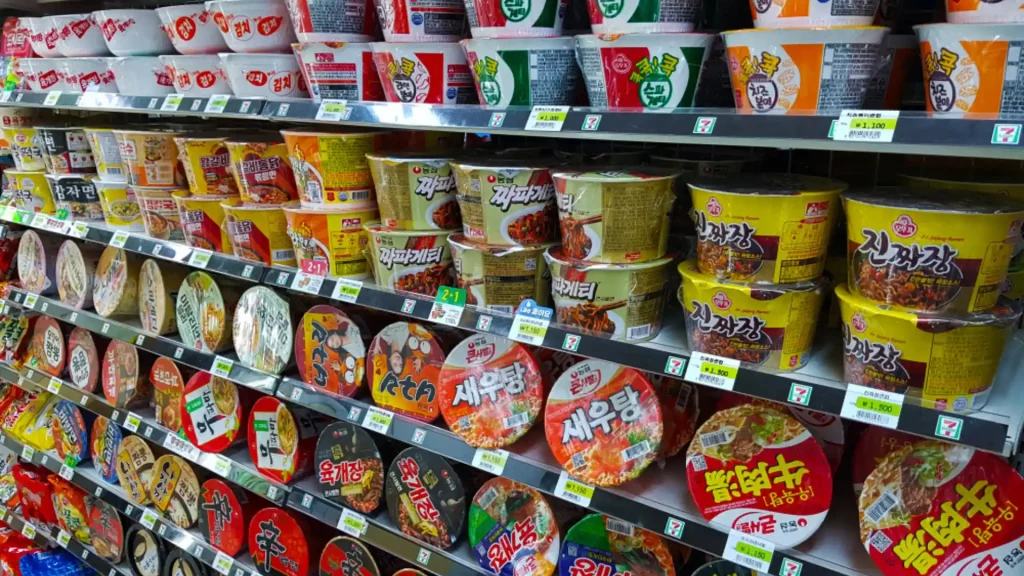Many are opting to include instant ramen in their daily life to mostly to get relief from the blazing food prices and cost-of-living crisis
The cost-of-living crisis is more rampant now than ever, hurting the pockets of middle and lower-income families. With food prices shooting through the roof, a cheap and convenient alternative is the most viable option. So, it is not surprising see to sales of instant ramen skyrocketing and almost becoming a global food staple.
The global craving for regular ramen has been widespread for quite some time now, but instant ramen’s popularity is growing and leading to the second ramen boom. The Osaka-based World Instant Noodle Association gave rather surprising numbers. Consumers in more than 50 countries had a record 121.2 bn servings of instant noodles in 2022.
Asian countries that have a long history of eating noodles, or countries that consume noodles as their staple diet top the list led by China, Hong Kong, and Indonesia. Vietnam and Japan are in the fourth and fifth position, but a new country that has no relation to noodles being in their staple diet bagged the third position and it’s India. This can be viewed as a sign of the food’s increasing popularity in countries where we do not closely associate with eating noodles.
The pandemic could be blamed for the initial rise in the consumption of instant ramen but according to data collected last year, the consumption has remained consistent and even increased after the restrictions were lifted and the world returned to normalcy. In Mexico, the demand for it increased by 17.2% in 2021, when the restrictions were tighter but still expanded by 11% in 2022. Quite remarkable numbers for a country where tacos and Quesadillas rule the food industry.
The United States too had its newfound love for instant ramen, mostly to get relief from the blazing food prices. “Middle-class consumers who did not eat instant noodles before are now incorporating them into their daily lives”, Nissin Foods, the Japanese noodle giant said, according to the reports of Nikkei.
Leveraging the Noodle Interest
The spiking sales of instant noodles have given new growth opportunities for the companies. Nissin and its rival Toyo Suisan announced their plans to begin the construction of production facilities in Mexico and the US by 2025. “The number of consumers who regularly eat instant noodles is going up, and we will increase our variety of flavours,” said Toyo Suisan to the Nikkei Business paper.
Nissin is planning to spend nearly $228 million on broadening its presence in the United States. They plan on building a new plant in Carolina, adding to its existing fleet of plants in Pennsylvania and California.
“Nissin Foods has seen sustained sales growth year-over-year, especially over the last five years, driven by unprecedented demand for our products. As we developed the company’s expansion plans, we determined early on that Greenville, South Carolina was the ideal location for our newest manufacturing facility, knowing it’s among the fastest-growing manufacturing cities in the country and that some other top brands are produced there”, said Micheal Prince Nissin Foods President and CEO.
Slurping History
Insutanto Ramen was invented by Momofuku Ando in 1958 as a way to provide ample food for Japan which was affected by the war. Food shortages led people to wait in long lines to get ramen. Amidst all this, Ando was experimenting and working on creating instant ramen, and in 1958, the world’s first instant noodles were born.
Ando’s chicken ramen became an instant hit and could be cooked in just under 3 minutes. The noodles were cooked, and then soaked in chicken soup, seasoned, and then deep-fried in palm oil. After one year of successful business, ‘chickin ramen’ started its journey around the world.
Now years later, they have become a global favorite with consumption increasing among the younger generation specifically. Ichiro Yamato, an instant ramen expert told The Guardian that the instant ramen boom happened during the postwar economic miracle, “when the workforce grew, and baby boomers started eating instant ramen and giving them to their children.”
But ramen was not untouched by the cost-of-living crisis, rather the price increased 20% during the last two years while some foods escaped the inflation in Japan. However, packet noodles and cup noodles are still cheaper options for many even if their nutritional benefits remain in question.
In 2022, the Japanese population had 6 billion servings of instant noodles, according to the Japan Instant Food Industry Association. These numbers are proof of continuing trends since cup noodles arrived in 1971. Since then, thousands of new flavours have been stocked in convenience stores.
Several other brands emerged but only a few survived in a rather competitive market. The Cup Noodle Museum in Osaka has nearly 900,000 annual visitors and people can make their version of the company’s signature cup noodles, which have sold more than 50 billion units since its launch around 50 years back, reports The Guardian.
What’s the secret recipe?
For instant noodles to compete with the growing market competition, they must be innovative not just in their looks but also in flavours. From the cheapest snack cum mini-meal option favourite for college students to having a global fan base across all age groups, instant ramen companies have stepped up their game by focusing on local culinary flavours and tastes.
They have a halal version for Muslim countries, a spicy Chettinad curry flavour for India, a nam pla fish sauce flavour in Thailand, and even seasonal flavours like pumpkin spice in the United States. The companies are also bringing innovative packing methods that make consumers nostalgic. Consumer trends are also shifting to more range of thicker instant noodles. Instant ramen nevertheless has come a long way since its inception and will continue to satisfy the tastebuds without hurting pockets.
